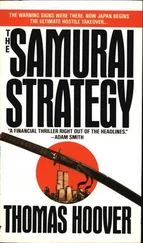Thomas Hoover - Project Daedalus
Здесь есть возможность читать онлайн «Thomas Hoover - Project Daedalus» весь текст электронной книги совершенно бесплатно (целиком полную версию без сокращений). В некоторых случаях можно слушать аудио, скачать через торрент в формате fb2 и присутствует краткое содержание. Жанр: Триллер, на английском языке. Описание произведения, (предисловие) а так же отзывы посетителей доступны на портале библиотеки ЛибКат.
- Название:Project Daedalus
- Автор:
- Жанр:
- Год:неизвестен
- ISBN:нет данных
- Рейтинг книги:5 / 5. Голосов: 1
-
Избранное:Добавить в избранное
- Отзывы:
-
Ваша оценка:
- 100
- 1
- 2
- 3
- 4
- 5
Project Daedalus: краткое содержание, описание и аннотация
Предлагаем к чтению аннотацию, описание, краткое содержание или предисловие (зависит от того, что написал сам автор книги «Project Daedalus»). Если вы не нашли необходимую информацию о книге — напишите в комментариях, мы постараемся отыскать её.
Project Daedalus — читать онлайн бесплатно полную книгу (весь текст) целиком
Ниже представлен текст книги, разбитый по страницам. Система сохранения места последней прочитанной страницы, позволяет с удобством читать онлайн бесплатно книгу «Project Daedalus», без необходимости каждый раз заново искать на чём Вы остановились. Поставьте закладку, и сможете в любой момент перейти на страницу, на которой закончили чтение.
Интервал:
Закладка:
The real action was clearly the middle G-seat, which was surrounded by instrument consoles and situated beneath a huge suspended helmet, white enamel and shaped like a bloated moth. Everything about the controls bespoke advanced design philosophy: Instead of the usual flight stick placed between the pilot's knees, it had a multiple-control sidestick, covered with switches and buttons, situated on the pilot's right, something only recently introduced in the ultramodern American F-16 Falcon.
Although the throttle quadrant was still located on the left-hand console, in standard fashion, it, too, had a grip skillfully designed to incorporate crucial avionics: the multiple radars, identification-friend-or-foe (IFF) instrumentation, instrument landing system (ILS), and tactical air navigation (TACAN).
He realized they'd utilized the new Hotas concept-hands on throttle and stick-that located all the important controls directly on the throttle and flight stick, enabling the pilot to command the instruments and flight systems purely by feel, like a virtuoso typist. Even the thin rudder pedals looked futuristic. The whole layout, in severe blacks and grays, was sleek as an arrow.
In the end, however, maybe it was all redundant. According to Andrei Androv this vehicle incorporated an advanced control system called equipment vocal pour aeronef; it could be flown entirely by voice interface with an artificial intelligence computer. All flight and avionics interrogations, commands, and readouts could be handled verbally. You just talked to the damn thing and it talked back. The twenty-first century had arrived.
The other two G-seats in the cockpit, intended for research scientists, were positioned on either side of the pilot, about four feet away, with no controls whatsoever. All this baby needed was Androv and his computer.
There was more. The space was cylindrical, which could only mean one thing: It was designed to be rotated, again probably by the computer, adjusting the attitude or inclination of the pilot continuously to make sure the G-forces of acceleration and deceleration would always be acting down on him, like gravity, securing him into that special G-seat. And why not? Since there was no windscreen, the direction the pilot faced was irrelevant-up, down, or even backward; who cared?
And the helmet, that massive space-moth intended to be lowered over the pilot's head. From the briefing, he knew that the screens inside were how the pilot "saw." Through voice command to the central computer he could summon any of the three dozen video terminals along the walls and project them on the liquid crystal displays before his eyes.
"So far, so good," Androv said, stepping in and down. Vance followed, then reached back to secure the hatch. It closed with a tight, reassuring thunk. The silent blinking of computer screens engulfed them.
"By the way, it's up there," Vance said quietly, shifting his head toward the newly installed video camera positioned just above the entry hatch. Androv glanced up, nodded, and together they turned away from it. Then without further conversation they each ripped off their Velcro-secured insignias-Androv's, the Soviet air force red star bordered in white; Vance's, the double ax-and exchanged them.
"How much time?" Androv whispered.
"Just give me ten minutes." He held up his heavy wrist-watch. Together they checked and synchronized.
"Good luck." Androv nodded and gave another thumbs- up sign, then clasped him in an awkward Russian hug. Vance braced himself for the traditional male kiss, but thankfully it didn't come. "Do svidania, moi droog," he said finally, standing back and saluting. Then he grinned and continued in accented English, "Everything will be A-okay."
Without another word he swung open the hatch, passed through, and stepped into the personnel module.
Vance watched him depart, then turned back to examine the Daedalus cockpit more closely. It was a bona fide marvel.
Screens, banks of screens, all along the wall-almost like a TV station's control room. Everything was there. Looking across, left to right, he saw that the engine readouts were placed on top: white bars showing power level, fan rpm, engine temperatures, core rpm, oil pressure, hydraulics, complete power-plant status. The next row started on the navigation and avionics: the radar altimeter, the airspeed indicator, the attitude-director indicator (AID) for real-time readings of bank and dive angle, the horizontal situation indicator (HSD) for actual heading and actual track, and on and on. All the electronics modules were already operating in standby mode-the slit-scan radar, the scanners, the high-resolution doppler. Other screens showed the view of the hangar as seen by the video cameras on the landing gear, now switched over from their infrared mode to visible light.
The avionics, all digital, were obviously keyed to the buttons and switches on the sidestick, the throttles, and the two consoles. Those controls, he realized upon closer inspection, could alter their function depending on which display was being addressed, thereby reducing the clutter of separate buttons and toggle switches on the handgrips.
The cockpit was not over-designed the way so many modern ones tended to be: instead it had been entirely rethought. There were probably two hundred separate system readouts and controls, but the pilot's interface was simple and totally integrated. It was beautiful, a work of pure artistry.
Which made him sad. He'd always been an aviation buff, and the thought of obliterating a creation this spectacular provoked a sigh.
On the other hand, H-bombs were probably beautiful too. This was another vengeful Shiva, Destroyer of Worlds. Ridding the planet of its first hypersonic weapons delivery system would be a public service to all humankind.
But first things first. He had no intention of allowing his next moves to be on TV. The newly installed monitor, part of the "retrofit," was about to get a small adjustment.
Strolling back toward the entry hatch, he quickly detached the reflecting outer visor that was designed to drop down over the front of his flight helmet. Then he reached up and wedged the silvered portion against the lens. The camera would continue to operate, relaying back no malfunction signals, but it would be sending a picture of the ceiling. Next he unzipped his flight suit and carefully unstrapped the package riding against his chest. Inside were the six taffy-colored bars of C-4 plastic explosive, each an inch square and six inches long, all wrapped in clear Cellophane. They almost looked like candy, but they could blow this entire plane through the hangar's roof.
The charge had to be set before the two Mino-gumi pilots were delivered by the Personnel Module. When they arrived, he'd simply pretend to be Yuri Androv and say they all had to go back down for a final check of their pressure-suit environmental systems. The moment they were clear, he'd activate the radio and detonate. Then the fun would begin.
There. The two consoles on either side of the central G-seat, that's where he'd wedge the charges. It was the perfect place, the central nervous system. After one last, wistful look at the banks of video displays along the wall, he set to work. Friday 8:43 A.M.
"Do you understand?" Tanzan Mino asked. It sounded more like a command. They were in the Mino Industries Prep Section, a preflight briefing room that led directly into the hangar. The faceplates of the two pilots' flight helmets were raised, allowing him to see their eyes. "Any deviation from the prescribed maneuver blocks will signal a problem."
"Hai, Mino-sama," both men nodded grimly. They had come here in the cockpit of his personal Boeing, and they were not happy with their new assignment. Neither had the slightest desire to risk his life in the service of the oyabun s megalomania. The command to serve as last-minute "co-pilots" in the Daedalus, however, was an offer they could not refuse.
Читать дальшеИнтервал:
Закладка:
Похожие книги на «Project Daedalus»
Представляем Вашему вниманию похожие книги на «Project Daedalus» списком для выбора. Мы отобрали схожую по названию и смыслу литературу в надежде предоставить читателям больше вариантов отыскать новые, интересные, ещё непрочитанные произведения.
Обсуждение, отзывы о книге «Project Daedalus» и просто собственные мнения читателей. Оставьте ваши комментарии, напишите, что Вы думаете о произведении, его смысле или главных героях. Укажите что конкретно понравилось, а что нет, и почему Вы так считаете.












